Polygenic Variants Linked to Oxidative Stress and the Antioxidant System Are Associated with Type 2 Diabetes Risk and Interact with Lifestyle Factors
Abstract
:1. Introduction
2. Materials and Methods
2.1. Data Acquisition
2.2. Genotyping Using a Korean Chip and Quality Control
2.3. Genetic Variants Associated with T2DM
2.4. Gene Ontology (GO) and Kyoto Encyclopedia of Gene and Genomes (KEGG) Pathway Enrichment Analysis
2.5. PRS Generation
2.6. Genotype-Tissue Expression (GTEx) of Genetic Variants and Their Distribution of Tissue/Organs
2.7. Molecular Docking of the Genes Having a Missense Mutation with Food Compounds and Molecular Dynamics Simulation (MDS)
2.8. Statistical Analysis
3. Results
3.1. Characteristics of the Participants
3.2. DEOSGs Identification and Functional Enrichment Analysis
3.3. Genetic Variants Involved in the Antioxidant System and Response to Oxidative Stress Linked to T2DM Risk
3.4. Gene Expression of GPX3 and GGT1 in Various Tissues according to Genetic Variants
3.5. The Binding Energy of GSTA5_rs7739421 with Food Components
3.6. Interaction of the PRS Related to the Antioxidant System with Nutrient Intake
4. Discussion
Supplementary Materials
Author Contributions
Funding
Institutional Review Board Statement
Informed Consent Statement
Data Availability Statement
Acknowledgments
Conflicts of Interest
References
- Park, S.; Kim, S.H.; Shin, J.Y. Combined association of skeletal muscle mass and grip strength with cardiovascular diseases in patients with type 2 diabetes. J. Diabetes 2021, 13, 1015–1024. [Google Scholar] [CrossRef] [PubMed]
- Khan, M.A.B.; Hashim, M.J.; King, J.K.; Govender, R.D.; Mustafa, H.; Al Kaabi, J. Epidemiology of Type 2 Diabetes-Global Burden of Disease and Forecasted Trends. J. Epidemiol. Glob. Health 2020, 10, 107–111. [Google Scholar] [CrossRef] [PubMed] [Green Version]
- Sun, H.; Saeedi, P.; Karuranga, S.; Pinkepank, M.; Ogurtsova, K.; Duncan, B.B.; Stein, C.; Basit, A.; Chan, J.C.N.; Mbanya, J.C.; et al. IDF Diabetes Atlas: Global, regional and country-level diabetes prevalence estimates for 2021 and projections for 2045. Diabetes Res. Clin. Pract. 2022, 183, 109119. [Google Scholar] [CrossRef] [PubMed]
- Binns, C.; Low, W.Y. Diabetes in the Asia Pacific Region. Asia Pac. J. Public Health 2016, 28, 472–474. [Google Scholar] [CrossRef] [PubMed] [Green Version]
- Mukai, E.; Fujimoto, S.; Inagaki, N. Role of Reactive Oxygen Species in Glucose Metabolism Disorder in Diabetic Pancreatic β-Cells. Biomolecules 2022, 12, 1228. [Google Scholar] [CrossRef]
- Karunakaran, U.; Park, K.-G. A Systematic Review of Oxidative Stress and Safety of Antioxidants in Diabetes: Focus on Islets and Their Defense. Diabetes Metab. J. 2013, 37, 106–112. [Google Scholar] [CrossRef] [Green Version]
- Alu, S.N.; Los, E.A.; Ford, G.A.; Stone, W.L. Oxidative Stress in Type 2 Diabetes: The Case for Future Pediatric Redoxomics Studies. Antioxidants 2022, 11, 1336. [Google Scholar] [CrossRef]
- Inaishi, J.; Saisho, Y. Ethnic Similarities and Differences in the Relationship between Beta Cell Mass and Diabetes. J. Clin. Med. 2017, 6, 113. [Google Scholar] [CrossRef] [Green Version]
- Hur, H.J.; Yang, H.J.; Kim, M.J.; Lee, K.H.; Kim, M.S.; Park, S. Association of Polygenic Variants with Type 2 Diabetes Risk and Their Interaction with Lifestyles in Asians. Nutrients 2022, 14, 3222. [Google Scholar] [CrossRef]
- Park, S. Association of polygenic risk scores for insulin resistance risk and their interaction with a plant-based diet, especially fruits, vitamin C, and flavonoid intake, in Asian adults. Nutrition 2023, 111, 112007. [Google Scholar] [CrossRef]
- Narayan, K.M.V.; Kanaya, A.M. Why are South Asians prone to type 2 diabetes? A hypothesis based on underexplored pathways. Diabetologia 2020, 63, 1103–1109. [Google Scholar] [CrossRef] [PubMed]
- Rehman, K.; Akash, M.S.H. Mechanism of Generation of Oxidative Stress and Pathophysiology of Type 2 Diabetes Mellitus: How Are They Interlinked? J. Cell. Biochem. 2017, 118, 3577–3585. [Google Scholar] [CrossRef] [PubMed]
- Azarova, I.; Polonikov, A.; Klyosova, E. Molecular Genetics of Abnormal Redox Homeostasis in Type 2 Diabetes Mellitus. Int. J. Mol. Sci. 2023, 24, 4738. [Google Scholar] [CrossRef]
- Lutchmansingh, F.K.; Hsu, J.W.; Bennett, F.I.; Badaloo, A.V.; McFarlane-Anderson, N.; Gordon-Strachan, G.M.; Wright-Pascoe, R.A.; Jahoor, F.; Boyne, M.S. Glutathione metabolism in type 2 diabetes and its relationship with microvascular complications and glycemia. PLoS ONE 2018, 13, e0198626. [Google Scholar] [CrossRef] [Green Version]
- Forrester, S.J.; Kikuchi, D.S.; Hernandes, M.S.; Xu, Q.; Griendling, K.K. Reactive Oxygen Species in Metabolic and Inflammatory Signaling. Circ. Res. 2018, 122, 877–902. [Google Scholar] [CrossRef]
- Gusti, A.M.T.; Qusti, S.Y.; Bahijri, S.M.; Toraih, E.A.; Bokhari, S.; Attallah, S.M.; Alzahrani, A.; Alshehri, W.M.A.; Alotaibi, H.; Fawzy, M.S. Glutathione S-Transferase (GSTT1 rs17856199) and Nitric Oxide Synthase (NOS2 rs2297518) Genotype Combination as Potential Oxidative Stress-Related Molecular Markers for Type 2 Diabetes Mellitus. Diabetes Metab. Syndr. Obes. Targets Ther. 2021, 14, 1385–1403. [Google Scholar] [CrossRef]
- Liu, D.; Liu, L.; Hu, Z.; Song, Z.; Wang, Y.; Chen, Z. Evaluation of the oxidative stress–related genes ALOX5, ALOX5AP, GPX1, GPX3 and MPO for contribution to the risk of type 2 diabetes mellitus in the Han Chinese population. Diabetes Vasc. Dis. Res. 2018, 15, 336–339. [Google Scholar] [CrossRef] [Green Version]
- Liu, L.-s.; Wang, D.; Tang, R.; Wang, Q.; Zheng, L.; Wei, J.; Li, Y.; He, X.-F. Individual and combined effects of the GSTM1, GSTT1, and GSTP1 polymorphisms on type 2 diabetes mellitus risk: A systematic review and meta-analysis. Front. Genet. 2022, 13, 959291. [Google Scholar] [CrossRef]
- Ryu, J.; Lee, C. Association of glycosylated hemoglobin with the gene encoding CDKAL1 in the Korean Association Resource (KARE) study. Hum Mutat 2012, 33, 655–659. [Google Scholar] [CrossRef] [PubMed]
- Park, S.; Liu, M. A Positive Causal Relationship between Noodle Intake and Metabolic Syndrome: A Two-Sample Mendelian Randomization Study. Nutrients 2023, 15, 2091. [Google Scholar] [CrossRef]
- Park, S. Height-Related Polygenic Variants Are Associated with Metabolic Syndrome Risk and Interact with Energy Intake and a Rice-Main Diet to Influence Height in KoGES. Nutrients 2023, 15, 1764. [Google Scholar] [CrossRef]
- Park, S.; Kim, C.; Wu, X. Development and Validation of an Insulin Resistance Predicting Model Using a Machine-Learning Approach in a Population-Based Cohort in Korea. Diagnostics 2022, 12, 212. [Google Scholar] [CrossRef]
- Yun, K.J.; Han, K.; Kim, M.K.; Park, Y.M.; Baek, K.H.; Song, K.H.; Kwon, H.S. Insulin Resistance Distribution and Cut-Off Value in Koreans from the 2008-2010 Korean National Health and Nutrition Examination Survey. PLoS ONE 2016, 11, e0154593. [Google Scholar] [CrossRef]
- Park, S. Association between polygenetic risk scores related to sarcopenia risk and their interactions with regular exercise in a large cohort of Korean adults. Clin. Nutr. 2021, 40, 5355–5364. [Google Scholar] [CrossRef]
- Kim, D.-Y.; Kim, Y.; Lim, H. Glycaemic indices and glycaemic loads of common Korean carbohydrate-rich foods. Br. J. Nutr. 2019, 121, 416–425. [Google Scholar] [CrossRef]
- Liu, X.; Wan, X.; Zhang, L.; Li, Y.; Ao, Y.; Zhuang, P.; Wu, Y.; Zhang, Y.; Jiao, J. The sulfur microbial diet and increased risk of obesity: Findings from a population-based prospective cohort study. Clin. Nutr. 2023, 42, 764–772. [Google Scholar] [CrossRef]
- Kim, Y.; Han, B.-G.; Ko, G.E.S.g. Cohort Profile: The Korean Genome and Epidemiology Study (KoGES) Consortium. Int. J. Epidemiol. 2017, 46, e20. [Google Scholar] [CrossRef]
- Rabbee, N.; Speed, T.P. A genotype calling algorithm for affymetrix SNP arrays. Bioinformatics 2006, 22, 7–12. [Google Scholar] [CrossRef] [PubMed] [Green Version]
- Sutulienė, R.; Brazaitytė, A.; Małek, S.; Jasik, M.; Samuolienė, G. Response of Oxidative Stress and Antioxidant System in Pea Plants Exposed to Drought and Boron Nanoparticles. Antioxidants 2023, 12, 528. [Google Scholar] [CrossRef] [PubMed]
- Wu, Z.; Wang, L.; Wen, Z.; Yao, J. Integrated analysis identifies oxidative stress genes associated with progression and prognosis in gastric cancer. Sci. Rep. 2021, 11, 3292. [Google Scholar] [CrossRef] [PubMed]
- Khera, A.V.; Chaffin, M.; Wade, K.H.; Zahid, S.; Brancale, J.; Xia, R.; Distefano, M.; Senol-Cosar, O.; Haas, M.E.; Bick, A.; et al. Polygenic Prediction of Weight and Obesity Trajectories from Birth to Adulthood. Cell 2019, 177, 587–596.e9. [Google Scholar] [CrossRef] [Green Version]
- Lewis, C.M.; Vassos, E. Polygenic risk scores: From research tools to clinical instruments. Genome Med. 2020, 12, 44. [Google Scholar] [CrossRef] [PubMed]
- Zhou, J.-Y.; Song, M.Y.; Park, S. Carbohydrate and sodium intake and physical activity interact with genetic risk scores of four genetic variants mainly related to lipid metabolism to modulate metabolic syndrome risk in Korean middle-aged adults. Br. J. Nutr. 2019, 122, 919–927. [Google Scholar] [CrossRef] [PubMed]
- Yuan, H.; Liu, L.; Zhou, J.; Zhang, T.; Daily, J.W.; Park, S. Bioactive Components of Houttuynia cordata Thunb and Their Potential Mechanisms Against COVID-19 Using Network Pharmacology and Molecular Docking Approaches. J. Med. Food 2022, 25, 355–366. [Google Scholar] [CrossRef]
- Yang, Y.; Shi, C.-Y.; Xie, J.; Dai, J.-H.; He, S.-L.; Tian, Y. Identification of potential dipeptidyl peptidase (DPP)-IV inhibitors among Moringa oleifera phytochemicals by virtual screening, molecular docking analysis, ADME/T-based prediction, and in vitro analyses. Molecules 2020, 25, 189. [Google Scholar] [CrossRef] [Green Version]
- SAS/STAT® 14.2 User’s Guide; SAS Inc.: Cary, NC, USA, 2016.
- Bhatti, J.S.; Sehrawat, A.; Mishra, J.; Sidhu, I.S.; Navik, U.; Khullar, N.; Kumar, S.; Bhatti, G.K.; Reddy, P.H. Oxidative stress in the pathophysiology of type 2 diabetes and related complications: Current therapeutics strategies and future perspectives. Free. Radic. Biol. Med. 2022, 184, 114–134. [Google Scholar] [CrossRef]
- Tabatabaei-Malazy, O.; Khodaeian, M.; Bitarafan, F.; Larijani, B.; Amoli, M.M. Polymorphisms of Antioxidant Genes as a Target for Diabetes Management. Int. J. Mol. Cell. Med. 2017, 6, 135–147. [Google Scholar] [CrossRef]
- Krueger, P.M.; Coleman-Minahan, K.; Rooks, R.N. Race/ethnicity, nativity and trends in BMI among U.S. adults. Obesity 2014, 22, 1739–1746. [Google Scholar] [CrossRef] [PubMed] [Green Version]
- Vicks, W.S.; Lo, J.C.; Guo, L.; Rana, J.S.; Zhang, S.; Ramalingam, N.D.; Gordon, N.P. Prevalence of prediabetes and diabetes vary by ethnicity among U.S. Asian adults at healthy weight, overweight, and obesity ranges: An electronic health record study. BMC Public Health 2022, 22, 1954. [Google Scholar] [CrossRef] [PubMed]
- Park, S. Interaction of Polygenetic Variants for Gestational Diabetes Mellitus Risk with Breastfeeding and Korean Balanced Diet to Influence Type 2 Diabetes Risk in Later Life in a Large Hospital-Based Cohort. J. Pers. Med. 2021, 11, 1175. [Google Scholar] [CrossRef]
- Park, S.; Liu, M.; Kang, S. Alcohol Intake Interacts with CDKAL1, HHEX, and OAS3 Genetic Variants, Associated with the Risk of Type 2 Diabetes by Lowering Insulin Secretion in Korean Adults. Alcohol. Clin. Exp. Res. 2018, 42, 2326–2336. [Google Scholar] [CrossRef] [PubMed]
- Shoily, S.S.; Ahsan, T.; Fatema, K.; Sajib, A.A. Common genetic variants and pathways in diabetes and associated complications and vulnerability of populations with different ethnic origins. Sci. Rep. 2021, 11, 7504. [Google Scholar] [CrossRef]
- Azarova, I.; Klyosova, E.; Polonikov, A. The Link between Type 2 Diabetes Mellitus and the Polymorphisms of Glutathione-Metabolizing Genes Suggests a New Hypothesis Explaining Disease Initiation and Progression. Life 2021, 11, 886. [Google Scholar] [CrossRef]
- Banerjee, M.; Vats, P.; Kushwah, A.S.; Srivastava, N. Interaction of antioxidant gene variants and susceptibility to type 2 diabetes mellitus. Br. J. Biomed. Sci. 2019, 76, 166–171. [Google Scholar] [CrossRef] [PubMed]
- Saito, Y. Selenoprotein P as a significant regulator of pancreatic β cell function. J. Biochem. 2020, 167, 119–124. [Google Scholar] [CrossRef]
- Qiu, L.; Yang, Q.; Zhao, W.; Xing, Y.; Li, P.; Zhou, X.; Ning, H.; Shi, R.; Gou, S.; Chen, Y.; et al. Dysfunction of the energy sensor NFE2L1 triggers uncontrollable AMPK signaling and glucose metabolism reprogramming. Cell Death Dis. 2022, 13, 501. [Google Scholar] [CrossRef]
- Gou, S.; Qiu, L.; Yang, Q.; Li, P.; Zhou, X.; Sun, Y.; Zhou, X.; Zhao, W.; Zhai, W.; Li, G.; et al. Metformin leads to accumulation of reactive oxygen species by inhibiting the NFE2L1 expression in human hepatocellular carcinoma cells. Toxicol. Appl. Pharmacol. 2021, 420, 115523. [Google Scholar] [CrossRef] [PubMed]
- Valdés-Ramos, R.; Guadarrama-López, A.L.; Martínez-Carrillo, B.E.; Benítez-Arciniega, A.D. Vitamins and type 2 diabetes mellitus. Endocr. Metab. Immune Disord. Drug Targets 2015, 15, 54–63. [Google Scholar] [CrossRef] [PubMed] [Green Version]
- Pang, G.M.; Li, F.X.; Yan, Y.; Zhang, Y.; Kong, L.L.; Zhu, P.; Wang, K.F.; Zhang, F.; Liu, B.; Lu, C. Herbal medicine in the treatment of patients with type 2 diabetes mellitus. Chin. Med. J. 2019, 132, 78–85. [Google Scholar] [CrossRef]
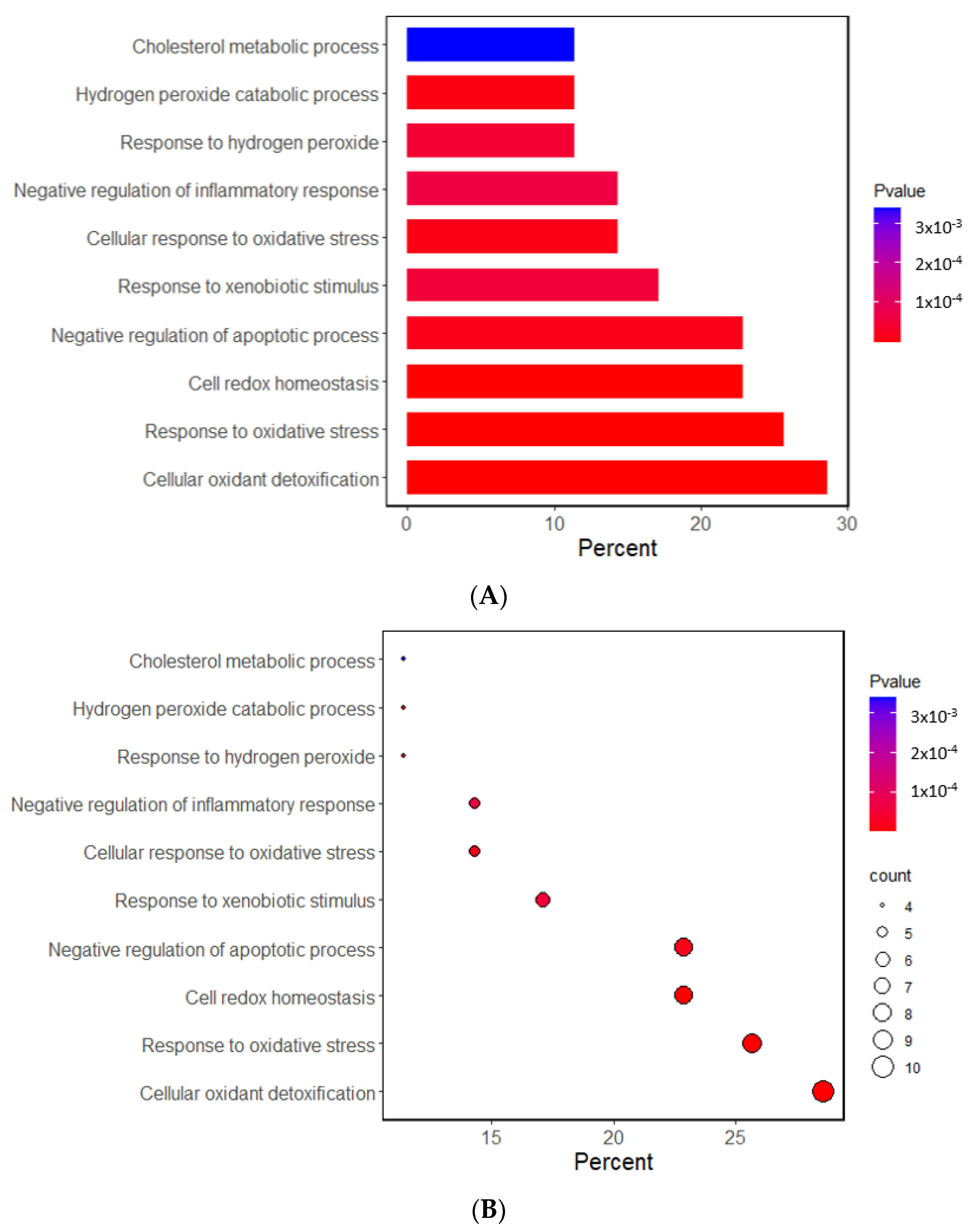
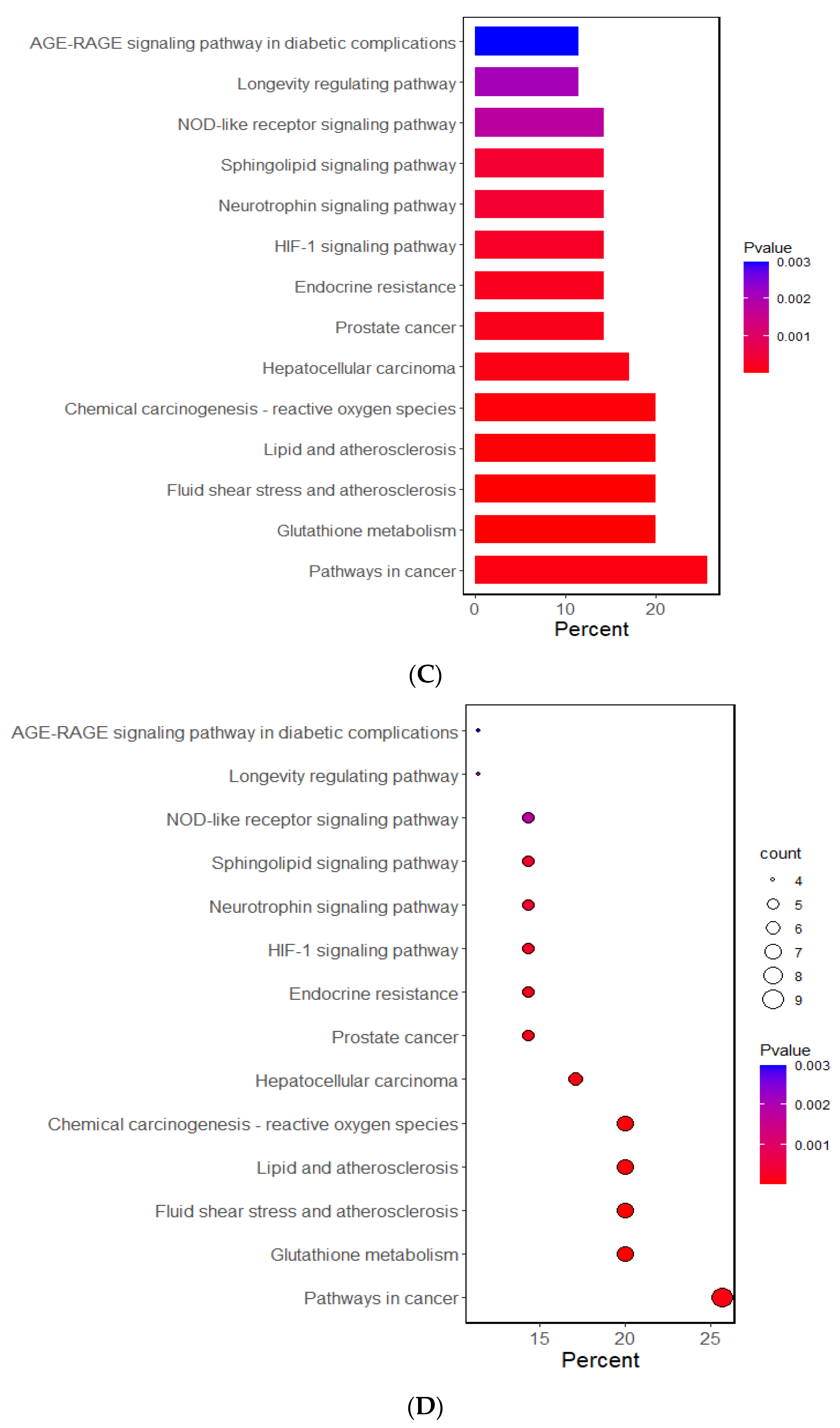
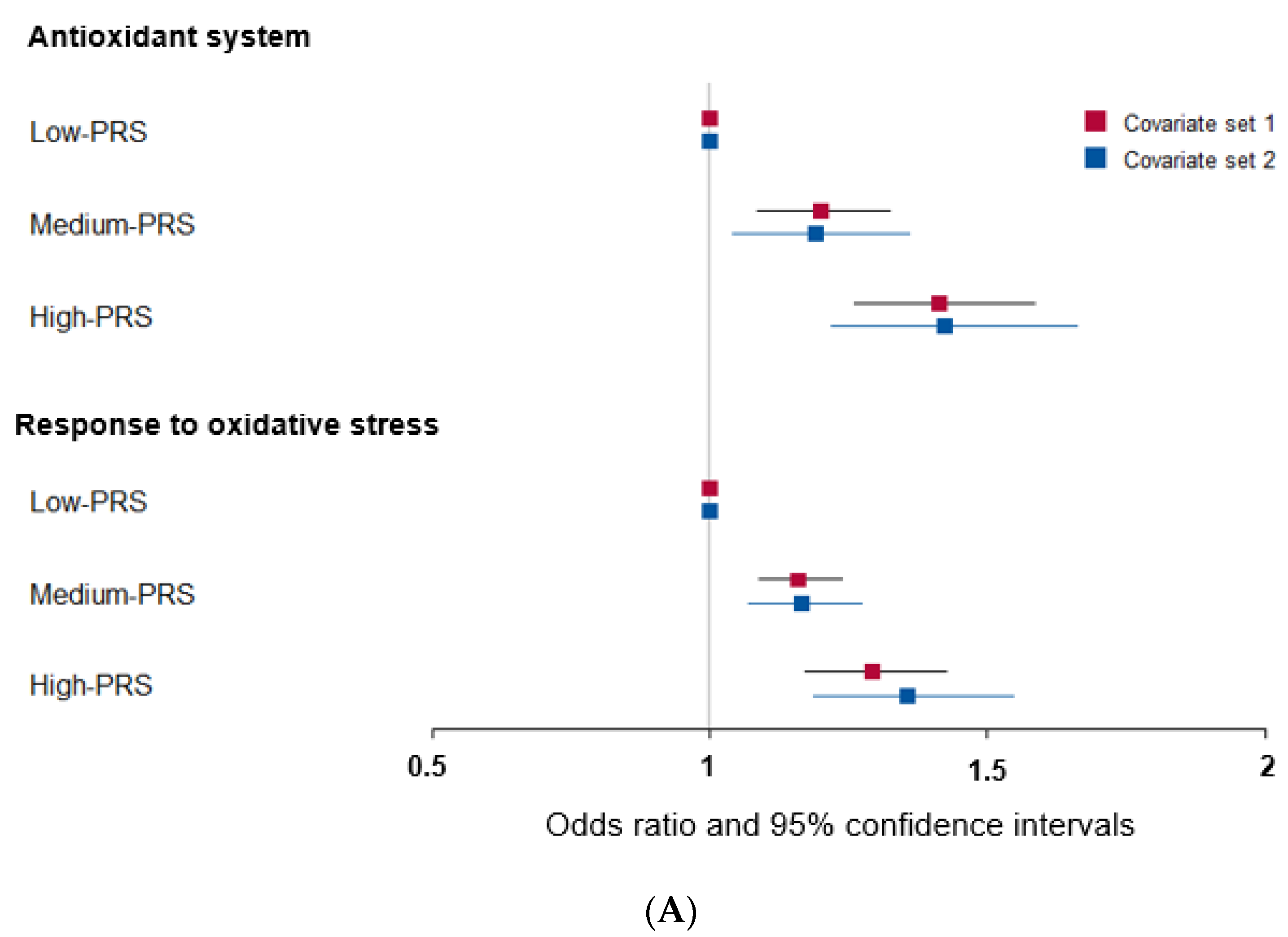


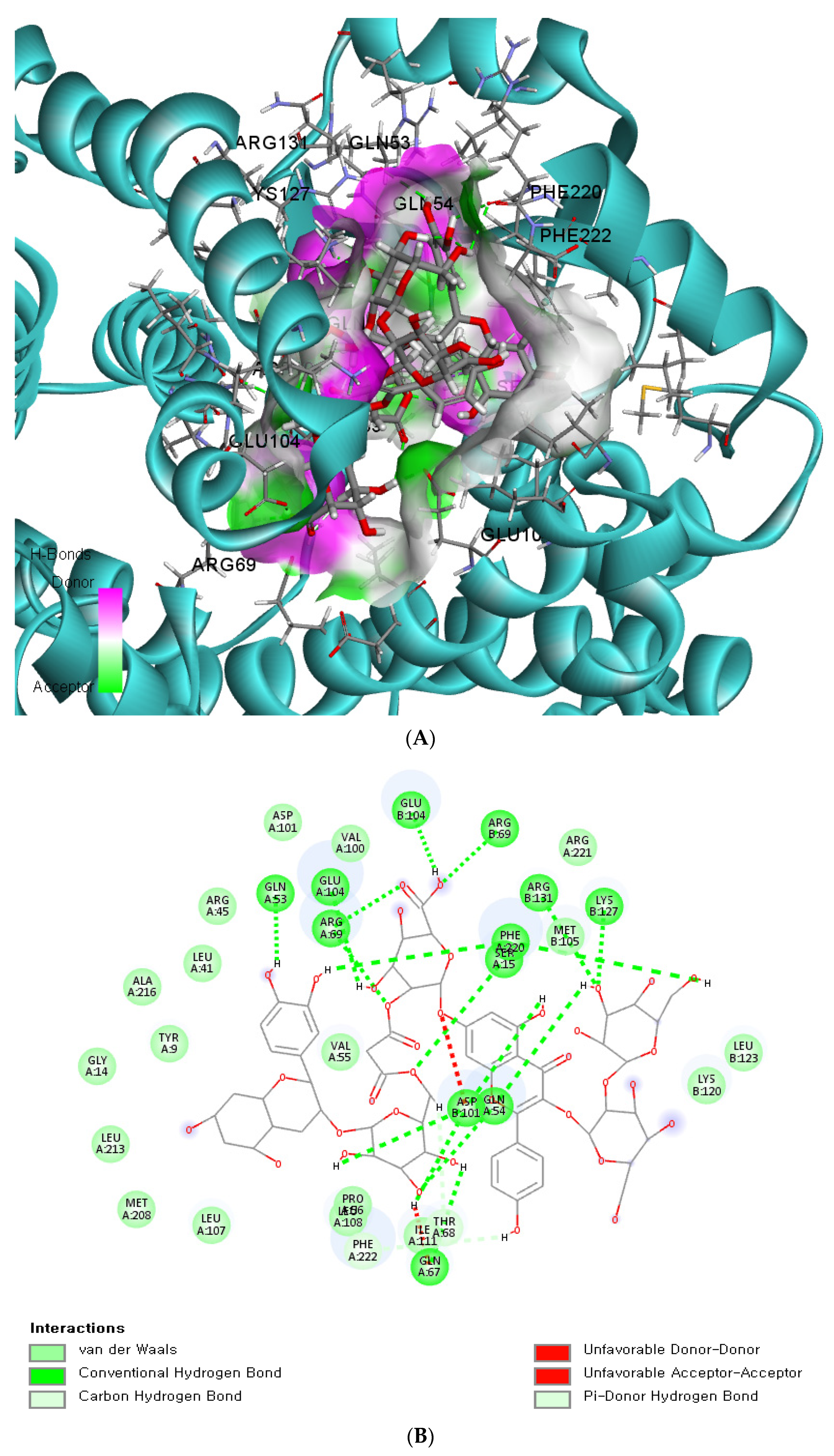

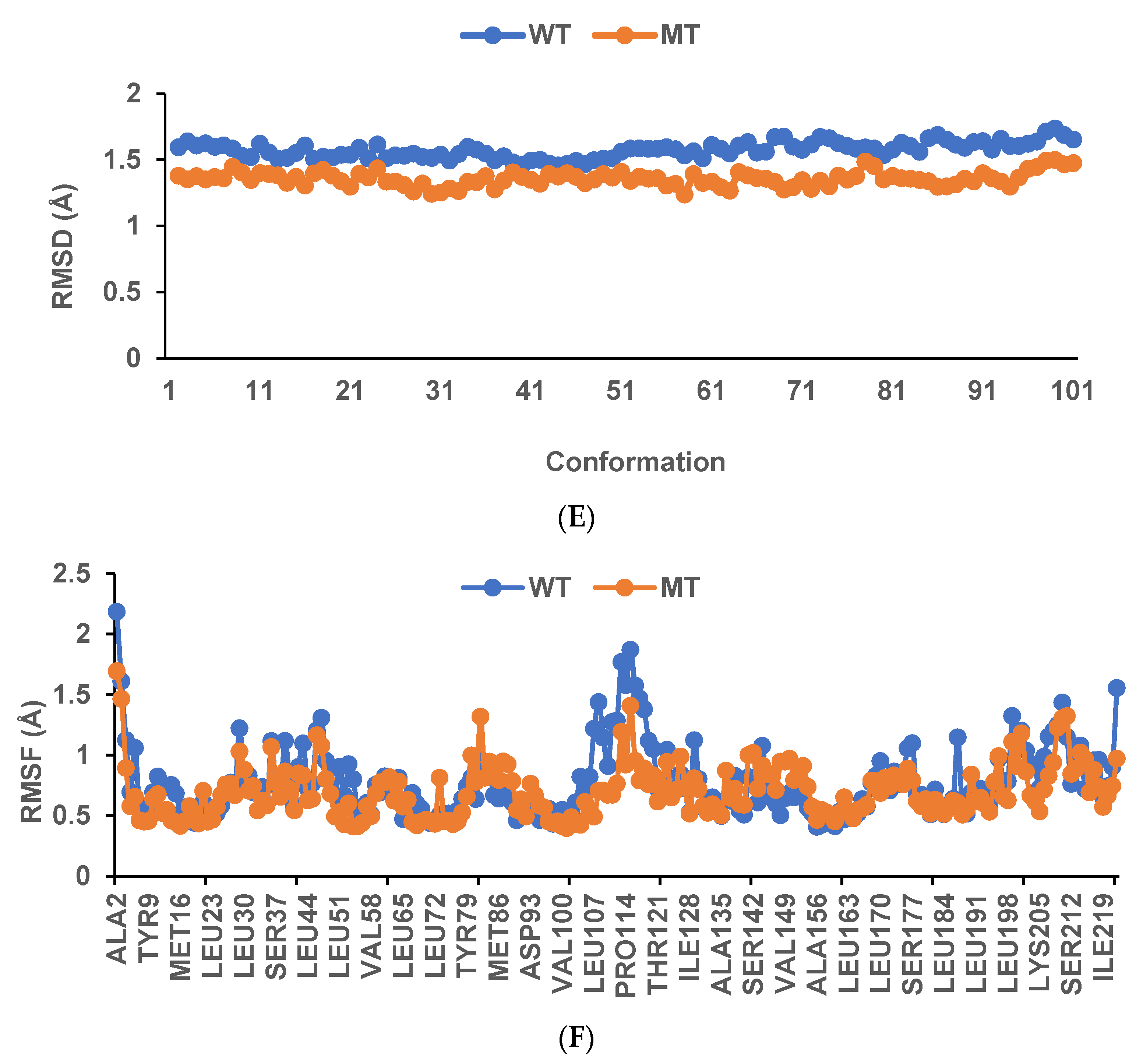
| Parameters | Non-T2DM (n = 52,634) | T2DM (n = 5310) |
|---|---|---|
| Age (years) | 53.9 ± 0.03 | 57.2 ± 0.14 *** |
| Gender (men; N, %) | 17,405 (33.1) | 2596 (48.9) |
| Education (N, %) | ||
| ≤Middle school | 7354 (19.0) | 1137 (27.0) ***, 1 |
| High school | 28,463 (73.6) | 2842 (67.4) |
| ≥College | 2834 (7.33) | 239 (5.67) |
| BMI (kg/m2) | 23.8 ± 0.02 | 24.7 ± 0.05 *** |
| Waist circumference (cm) | 80.5 ± 0.03 | 81.5 ± 0.09 *** |
| Plasma glucose (mg/dL) | 91.4 ± 0.09 | 130.8 ± 0.28 *** |
| HbA1c (%) | 5.5 ± 0.00 | 7.1 ± 0.01 *** |
| HOMA-IR 2 (%) | 1456 (2.77) | 3098 (58.3) *** |
| Hs-CRP (mg/dL) | 0.13 ± 0.00 | 0.17 ± 0.01 *** |
| Cardiovascular disease (N, %) | 1789 (3.40) | 499 (9.41) *** |
| Myocardial infarction (N, %) | 1288 (2.45) | 366 (6.90) *** |
| Stroke (N, %) | 533 (1.01) | 149 (2.81) *** |
| Energy intake (EER %) | 97.5 ± 0.19 | 94.3 ± 0.57 *** |
| CHO (En%) | 71.7 ± 0.04 | 71.8 ± 0.13 |
| Fat (En%) | 13.9 ± 0.03 | 13.6 ± 0.1 ** |
| Protein (En%) | 13.5 ± 0.02 | 13.6 ± 0.05 |
| Korean balanced diet (N, %) | 17,780 (33.8) | 1808 (34.1) |
| Plant-based diet (N, %) | 39,242 (74.6) | 3925 (73.9) |
| Western-style diet (N, %) | 21,576 (41.0) | 1976 (37.2) *** |
| Rice main diet (N, %) | 18,137 (34.5) | 1433 (27.0) *** |
| Dietary inflammatory index | −20.8 ± 0.09 | −21.5 ± 0.27 *** |
| Glycemic index | 47.8 ± 0.06 | 46.8 ± 0.17 *** |
| Glycemic load | 149.6 ± 0.2 | 146.2 ± 0.62 *** |
| Bioactive compounds 3 (mg/day) | 40.5 ± 0.19 | 38.2 ± 0.56 ** |
| Vitamin C (mg/day) | 110.2 ± 0.35 | 107.6 ± 1.09 * |
| Sulfur microbial diet | −52.5 ± 0.44 | −52.5 ± 1.34 |
| Alcohol (g/day) | 16.9 ± 0.29 | 16.8 ± 0.91 |
| Coffee (cup/day) | 0.71 ± 0.00 | 0.65 ± 0.01 *** |
| Exercise 4 (Y, %) | 28,539 (54.3) | 3071 (57.9) *** |
| Non-smoking (N, %) | 48,594 (92.4) | 4770 (89.9) |
| Former smoking (N, %) | 2360 (4.49) | 310 (5.84) |
| Smoking (N, %) | 1662 (3.16) | 228 (4.30) *** |
| Gene Accession Number | Relevance Score | |||
|---|---|---|---|---|
| T2DM | Oxidative Stress | Antioxidant System | ||
| GPX1 | NM_000581.4 | 32.39 | 22.18 | 7.99 |
| GSR | NM_000637.5 | 30.00 | 28.39 | 15.13 |
| APOE | NM_000041.4 | 29.95 | 9.21 | 5.25 |
| PON2 | NM_000305.3 | 22.85 | 11.41 | 5.46 |
| GGT1 | NM_001288833.2 | 22.66 | 9.58 | 3.79 |
| GPX3 | NM_001329790.2 | 21.09 | 11.56 | 4.54 |
| SELENOP | NM_001085486.3 | 15.07 | 7.08 | 4.55 |
| PRDX6 | NM_004905.3 | 14.41 | 14.12 | 12.48 |
| GCLC | NM_001197115.2 | 12.91 | 11.52 | 3.52 |
| NFE2L1 | NM_001330261.2 | 9.77 | 8.69 | 6.30 |
| GSTA5 | NM_153699.3 | 7.52 | 7.04 | 3.11 |
| A. Genetic Variants Selected for the Antioxidant System | |||||||||||
| Chr 1 | SNP 2 | Position | Mi 3 | Ma 4 | OR 5 | SE 6 | P 7 | Gene Names | Location | MAF 8 | p-Value for HWE 9 |
| 1 | rs150751487 | 173484177 | C | T | 0.944 | 0.0193 | 0.0022 | PRDX6 | Intron variant | 0.284 | 0.490 |
| 3 | rs1050614 | 49394636 | C | T | 0.921 | 0.0407 | 0.0038 | GPX1 | 3′ UTR variant | 0.060 | 0.768 |
| 5 | rs8177426 | 151023379 | A | G | 0.877 | 0.0692 | 0.0024 | GPX3 | Intron variant | 0.028 | 0.822 |
| 6 | rs7739421 | 52697404 | T | C | 1.070 | 0.0267 | 0.0038 | GSTA5 | Intron variant | 0.132 | 0.957 |
| 6 | rs2397118 | 52701143 | C | T | 0.942 | 0.0274 | 0.0020 | GSTA5 | Missense variant P.Val(C)55Leu(T) | 0.157 | 0.236 |
| 6 | rs74515451 | 53436825 | C | A | 1.110 | 0.0282 | 0.0067 | GCLC | Intron variant | 0.109 | 0.210 |
| 6 | rs78386169 | 53474246 | G | A | 0.874 | 0.0467 | 0.0011 | GCLC | Intron variant | 0.053 | 0.136 |
| 7 | rs10274638 | 114914505 | G | A | 1.092 | 0.0316 | 0.0019 | GSR | Intron variant | 0.095 | 0.205 |
| 22 | rs2076999 | 25003934 | A | G | 1.058 | 0.0186 | 0.0017 | GGT1 | 3′ UTR variant | 0.351 | 0.731 |
| B. Genetic Variants Selected for the Response to Oxidative Stress | |||||||||||
| Chr 1 | SNP 2 | Position | Mi 3 | Ma 4 | OR 5 | SE 6 | P 7 | Gene names | Location | MAF 8 | p-Value for HWE 9 |
| 1 | rs150751487 | 173484177 | C | T | 0.944 | 0.0193 | 0.00215 | PRDX6 | Intron variant | 0.284 | 0.490 |
| 3 | rs1050614 | 49394636 | C | T | 0.921 | 0.0407 | 0.00376 | GPX1 | 3′ UTR variant | 0.060 | 0.768 |
| 5 | rs28919269 | 42804538 | G | C | 1.058 | 0.0199 | 0.00224 | SELENOP | Intron variant | 0.287 | 0.226 |
| 5 | rs8177426 | 151023379 | A | G | 0.877 | 0.0652 | 0.00243 | GPX3 | Intron variant | 0.028 | 0.822 |
| 6 | rs74515451 | 53436825 | C | A | 1.110 | 0.0302 | 0.00671 | GCLC | Intron variant | 0.109 | 0.2100 |
| 7 | rs6462738 | 37235191 | C | T | 1.077 | 0.0234 | 0.00300 | PON2 | Intron variant | 0.121 | 0.877 |
| 17 | rs182345537 | 46128778 | T | G | 1.222 | 0.0809 | 0.00386 | NFE2L1 | Missense variant | 0.012 | 0.730 |
| 19 | rs769450 | 45410444 | A | G | 0.940 | 0.0268 | 0.00288 | APOE | Intron variant | 0.205 | 0.630 |
| Food Components | Valine at 55 | Leucine at 55 | Food Components | Valine at 55 | Leucine at 55 |
|---|---|---|---|---|---|
| Diosgenin 3-[glucosyl-(1->4)-[glucopyranosyl-(1->6)]-glucopyranosyl-(1->4)-rhamnosyl-(1->4)-[rhamnosyl-(1->2)]-glucoside] | −11.8 | −11.8 | (Cyanidin 3-O-(3-O-acetyl-beta-glucoside) (kaempferol 3-O-(2-O-beta-glucosyl-beta-glucoside)-7-O-beta-glucosiduronic acid) malonate | −9.9 | −10.7 |
| Matesaponin 4 | −11.3 | −11.4 | Lupeoside | −10.8 | −10.8 |
| Malvidin 3-chlorogenic acid glucoside | −9.3 | −11.2 | Kaempferol 3-[4″-(p-coumaroylglucosyl)rhamnoside] | −10.7 | −10.8 |
| Azaspiracid 5 | −10.7 | −11.2 | Delphinidin 3-[6″-(4″′-p-coumaroylrhamnosyl)glucoside] 5-glucoside | −10.0 | −10.7 |
| Theadibenzotropolone A | −11.9 | −11.2 | Theaflavin 3-gallate | −10.8 | −10.8 |
| Vitilagin | −11.2 | −11.1 | Kaempferol 3-(p-coumaroyl-glucoside) | −10.8 | −10.7 |
| Isotheaflavin 3′-gallate | −11.1 | −11 | Kuwanon Z | −10.6 | −10.7 |
| Isovitexin 2′′-O-(6′′′-feruloyl)glucoside | −11.0 | −11 | Fistuloside A | −10.7 | −10.7 |
| Cyanidin 3-O-(2′′-xylosyl-6′′-(6′′-p-coumaroyl-glucosyl)-galactoside) | −10.4 | −10.9 | Kaempferol 3-[2″-(p-coumaroylglucosyl)rhamnoside] | −10.6 | −10.7 |
| Malvidin 3-caffeoyl-glucoside | −10.9 | −10.9 | Kaempferol 3-rhamnosyl-(1->3)-rhamnosyl-(1->6)-glucoside | −10.5 | −10.6 |
| Quercetin 3-(6″-p-coumarylsophorotrioside) | −10.8 | −10.8 | Pelargonidin 3-O-[2-O-(6-(E)-feruloyl-beta-D-glucopyranosyl)-6-O-(E)-p-coumaroyl-beta-D-glucopyranoside] 5-O-(beta-D-glucopyranoside) | −10.6 | −10.6 |
| Delphinidin 3-caffeoylglucoside | −10.7 | −10.8 | Asterlingulatoside D | −9.4 | −11.3 |
| Petunidin 3-(4″-p-coumaroyl-rutinoside) | −10.8 | −10.8 | Kaempferol 3-O-rhamnosyl-rhamnosyl-glucoside | −8.7 | −10.4 |
| Cyanidin 3-dicaffeoyl-sophoroside 5-glucoside | −10.2 | −10.8 | (Cyanidin 3-O-beta-glucoside)(kaempferol 3-O-(2-O-beta-glucosyl-beta-glucoside)-7-O-beta-glucosiduronic acid) malonate | −8.9 | −11.1 |
| β-Chlorogenin 3-[2″,4″-dirhamnosylglucoside] | −10.7 | −10.8 | |||
| Low PRS | Medium PRS | High PRS | Gene–Nutrient Interaction p-Value | |
|---|---|---|---|---|
| Low PBD 1 High PBD | 1 1 | 1.172 (1.001–1.373) 1.189 (1.040–1.359) | 1.378 (1.206–1.575) 1.423 (1.220–1.660) | 0.0705 |
| Low DII 1 High DII | 1 1 | 1.156 (1.033–1.294) 1.385 (1.109–1.729) | 1.292 (1.135–1.472) 1.900 (1.486–2.431) | 0.0303 |
| Low bioactive 1 High bioactive | 1 1 | 1.236 (1.053–1.450) 1.075 (0.841–1.374) | 1.518 (1.265–1.822) 1.208 (0.906–1.611) | 0.0444 |
| Low vitamin C 2 High vitamin C | 1 1 | 1.138 (0.937–1.379) 1.229 (1.020–1.485) | 1.266 (1.113–1.678) 1.653 (1.315–2.076) | 0.0342 |
| Low vitamin D 2 High vitamin D | 1 1 | 1.056 (0.806–1.383) 1.233 (1.056–1.439) | 1.207 (0.884–1.648) 1.500 (1.256–1.791) | 0.0453 |
| Low coffee 1 High coffee | 1 1 | 1.027 (0.840–1.256) 1.320 (1.103–1.579) | 1.314 (1.044–1.653) 1.492 (1.212–1.837) | 0.037 |
| Non-smoking + former smoking Smoking | 1 1 | 1.138 (0.958–1.352) 1.289 (1.042–1.594) | 1.360 (1.116–1.656) 1.546 (1.209–1.976) | 0.0186 |
Disclaimer/Publisher’s Note: The statements, opinions and data contained in all publications are solely those of the individual author(s) and contributor(s) and not of MDPI and/or the editor(s). MDPI and/or the editor(s) disclaim responsibility for any injury to people or property resulting from any ideas, methods, instructions or products referred to in the content. |
© 2023 by the authors. Licensee MDPI, Basel, Switzerland. This article is an open access article distributed under the terms and conditions of the Creative Commons Attribution (CC BY) license (https://creativecommons.org/licenses/by/4.0/).
Share and Cite
Choi, Y.; Kwon, H.-K.; Park, S. Polygenic Variants Linked to Oxidative Stress and the Antioxidant System Are Associated with Type 2 Diabetes Risk and Interact with Lifestyle Factors. Antioxidants 2023, 12, 1280. https://doi.org/10.3390/antiox12061280
Choi Y, Kwon H-K, Park S. Polygenic Variants Linked to Oxidative Stress and the Antioxidant System Are Associated with Type 2 Diabetes Risk and Interact with Lifestyle Factors. Antioxidants. 2023; 12(6):1280. https://doi.org/10.3390/antiox12061280
Chicago/Turabian StyleChoi, Youngjin, Hyuk-Ku Kwon, and Sunmin Park. 2023. "Polygenic Variants Linked to Oxidative Stress and the Antioxidant System Are Associated with Type 2 Diabetes Risk and Interact with Lifestyle Factors" Antioxidants 12, no. 6: 1280. https://doi.org/10.3390/antiox12061280
APA StyleChoi, Y., Kwon, H.-K., & Park, S. (2023). Polygenic Variants Linked to Oxidative Stress and the Antioxidant System Are Associated with Type 2 Diabetes Risk and Interact with Lifestyle Factors. Antioxidants, 12(6), 1280. https://doi.org/10.3390/antiox12061280






